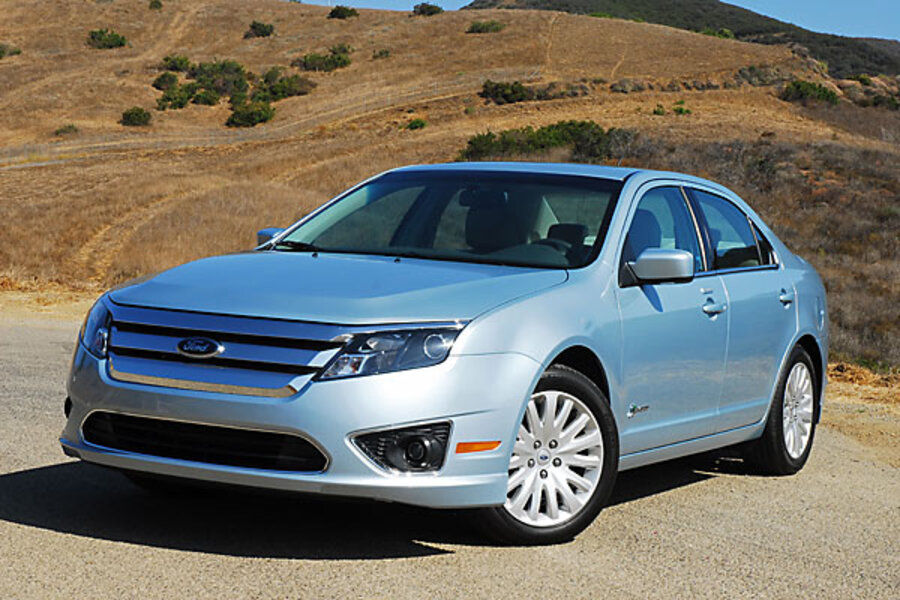Surprise! Ford, GM post sales gains by making cars people want to buy.
Loading...
| Chicago
General Motors and Ford Motor Co. each sold more vehicles in the United States this March than last, a sign that the domestic auto industry is regaining its nearly two years after the floor fell out of the consumer car market and two of the Big Three automakers slid into bankruptcy.
Chrysler, the third domestic manufacturer, reported an 8 percent decline in sales, year over year, as it struggles to emerge from bankruptcy. In February, the company had posted its first monthly sales gain in more than two years.
Ford sold 40 percent more cars and light trucks last month than in March 2009 – 183,425 versus 131,102. GM followed with a 21 percent rise, selling 188,011 vehicles compared with 155,334 a year earlier. Chrysler sold 101,011 new vehicles in March.
Toyota, which also posted a 40 percent sales increase in March, tied with Ford for the greatest sales jump. Ford's sales gains helped widen its marketshare to almost overtake GM, which was the top seller in March.
Total US sales rose 24 percent compared with March 2009, considered one of the weakest sales months in three decades. But because March 2010 sales are the healthiest since August – a month boosted by the “cash for clunkers” program – analysts suggest that Detroit is doing better at figuring out what consumers want and how to get them to buy.
Incentives such as low-rate financing, subsidized lease deals, and free maintenance offers are responsible for the sales spurt for both US and foreign automakers, say industry analysts. But successful debuts of new models also played a role in boosting sales for US-based companies, says Jessica Caldwell, senior analyst for Edmunds.com, which tracks the auto industry.
“Incentives definitely helped spur interest in those brands. But to be fair to Ford and GM, they have been making a lot of headway with a lot of their new products, so they’re not just selling deals,” she says.
Vehicles that both companies launched, or that were redesigned for fuel economy and safety, did especially well in March. Sales of the Buick LaCross luxury sedan increased 197 percent in March compared with last March, GM reported Thursday. Sales of the Chevrolet Equinox, a midsize crossover, jumped 194 percent.
Likewise, relaunches and new vehicles led Ford’s March sales. The Fusion Hybrid, which won the 2010 North American Car of the Year at the Detroit Auto Show, recorded a 79 percent increase in sales. Sales of the reconfigured Taurus were up 86 percent.
While the sales growth is welcome compared with last year’s fiasco and may help the economy recover in Auto Country, the industry is not likely to return to the heyday of the past decade. Through 2007, annual US sales averaged about 16.8 million. They plummeted to 13.2 million vehicles in 2008 and then crashed to 10.4 million in 2009, forcing bankruptcies, worker layoffs, and plant closings in the face of the new normal downscaled consumer spending.
“It’s a new industry,” says Caldwell. “You have to realize that there has been a change taking place, and I don’t think anyone will tell you we’re going to reach 16 million [units sold] this year. We have to be cautious when we say things are better than they were. We can’t get ahead of ourselves.”
The generous incentive deals helped to lure wary consumers back into showrooms, but they probably will not be enough to increase the manufacturers’ numbers as the year wears on. Sparring among companies over which one has the best deal may tire consumers who want more than a great financing deal.
“They work in the beginning to bring people in, but as these programs go on, people tune them out,” says Ms. Caldwell. “They’re looking for something new to make headlines or start conversations with. Zero percent financing is not something that has a ‘wow’ factor anymore.”





